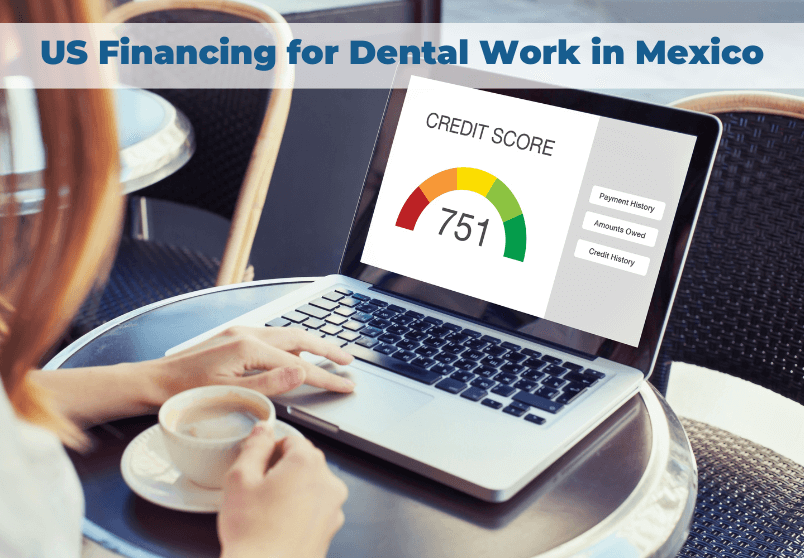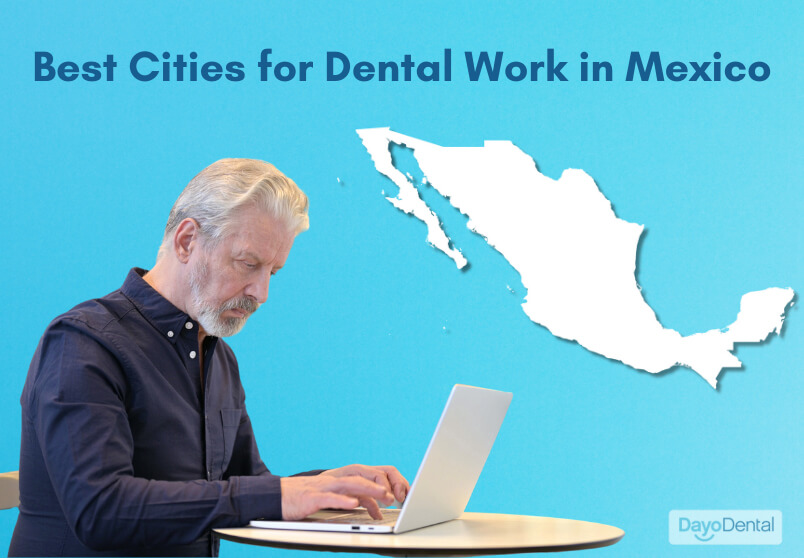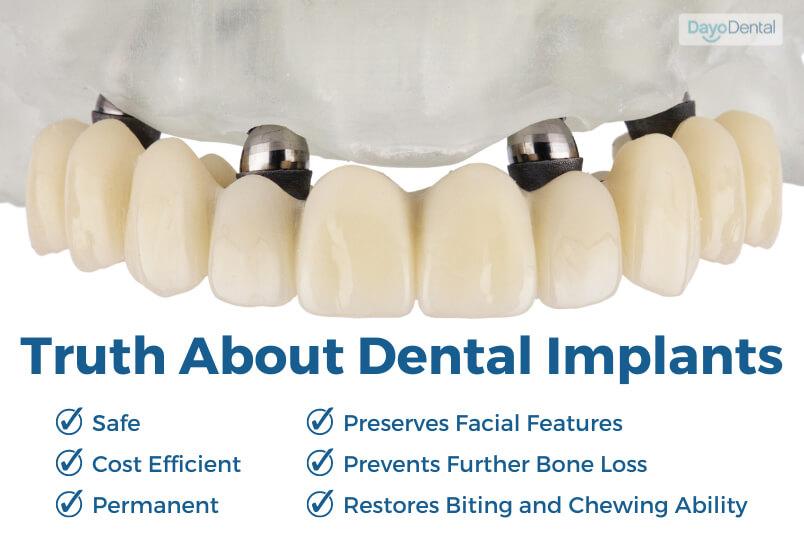8 Common Mistakes to Avoid With All on 4 Dental Implants
All-on-4 dental implants are an amazing procedure, but they’re also very complex. Here are the top 8 common mistakes to avoid with all-on-4 dental implants.
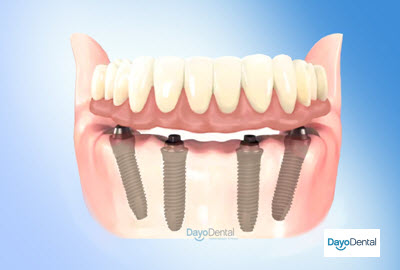
So you’ve heard of All-on-4 dental implants — replacing an entire row of teeth with just four dental implants. It sounds amazing. You get all your teeth back, and you don’t have to worry about uncomfortable dentures. All of the positives, none of the drawbacks.Right?
Not so fast. All-on-4 dental implants are an amazing procedure, but they’re also very complex. Before you start looking around for the best deal to get in on this revolutionary treatment, ask yourself — do you really know what you’re looking for?
You might’ve heard a bit about All-on-4 from your dentist, but how much information did you actually get? How long did they spend with you? How much detail did they get into?
Lots of people are seeking All-on-4 dental implants, but not all of them are making informed decisions. Here are the top 8 common mistakes to avoid with all-on-4 dental implants.

1. Not getting work from an experienced implant dentist
All on 4 is one of the most complex dental surgical procedures around. Like with most things, there’s a big difference between being able to perform the procedure, and being able to do it well.
You can find plenty of people who fit the former category. Not so many the latter.
Part of the problem is there are loads of dental offices offering to do All on Four dental implants these days. Almost every dental office across the USA and Mexico is starting to list it as one of their procedures.
But who’s behind that offer, exactly?
All on 4 is becoming very marketable. This means a lot of new dentists looking to start a profitable career are getting trained in the process early on. Even more experienced dentists who have little experience with oral surgeries are trying to get in on the practice.
This results in a market saturated with people who have maybe completed a handful of All on 4 surgeries heavily advertising it as a primary treatment in their office.
It can be a minefield for unaware patients.
The important thing to keep in mind is that All on 4 is a surgery. Every surgery carries inherent risks. Every individual surgery presents unique, unexpected challenges even for experienced surgeons. If the person performing the procedure isn’t experienced, you’re at risk.
How to find an experienced All on 4 dental implant dentist:
- Research the actual doctor’s credentials. Dental chains and dental offices like to group the combined experience of their teams in their advertising (“Over 75 years’ experience!”). You need to look into the credentials of the individual doctor performing the work.
- Ask how many All on 4 cases they’ve done. The more, the better. You don’t want to be one of the first 50 people this dentist has ever seen for this procedure if you can avoid it. You want someone who knows the procedure well, and knows how to deal with unexpected surprises during the surgery.
- Make sure they specifically have All on Four dental implant experience. This is very similar to the above, but we have to stress it. You may find a dentist who has done a few All on 4 procedures, but tries to sell you on the number of regular dental implant procedures they’ve done. While it’s reassuring to know they have surgical experience, All on 4 is a different process to traditional dental implants. The planning and placement of the implants is much more complex in All on 4, and is where much of the experience necessary comes in.
- Look for doctors who provide guarantees on their work. A guarantee on a medical procedure is risky for a doctor, so it’s usually a good sign when someone is confident enough to offer one.
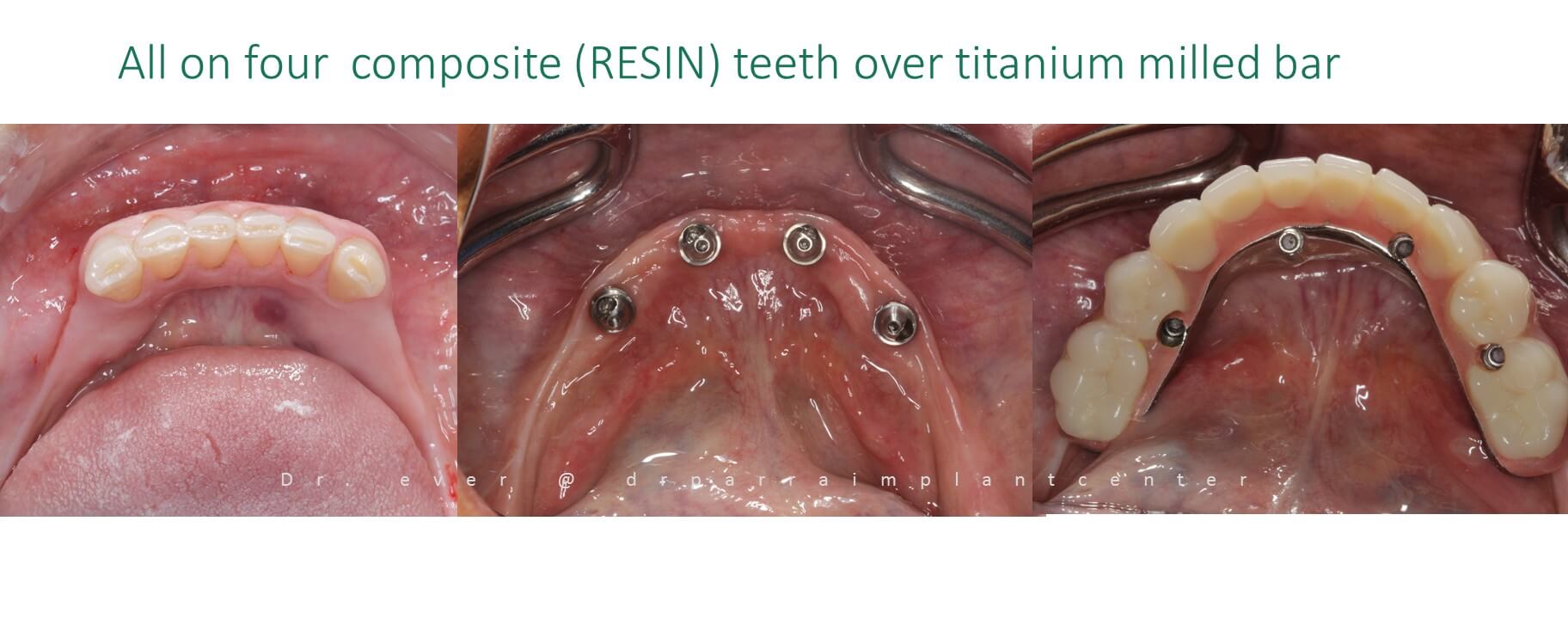
2. Not considering if you qualify for more than 4 implants per jaw
One of the appeals of All on 4 is that magic little number, “4”. A full set of upper or lower teeth on just 4 implants. Just 4 implants to be inserted, saving you time and money in the dentist’s chair. Minimal work, maximum results.
But dental implants is a situation where sometimes, more really is better.
While All on 4 implants are an amazing tool for many people, restoring an entire arch of teeth on 4 implants isn’t the “go to” full arch implants option. Instead it’s a fairly specific procedure that’s really only suitable in a small fraction of cases (see our next point, “Assuming that everyone is suitable for All on 4”).
Instead it’s often better to get what are known as either a “Fixed Zirconia Bridge” or “Fixed Hybrid Bridge” restoration. These other implant dental codes or names use 6-8 traditional implants to support a bridge, on which the dental prosthetic (full set of upper or lower teeth) is then placed.
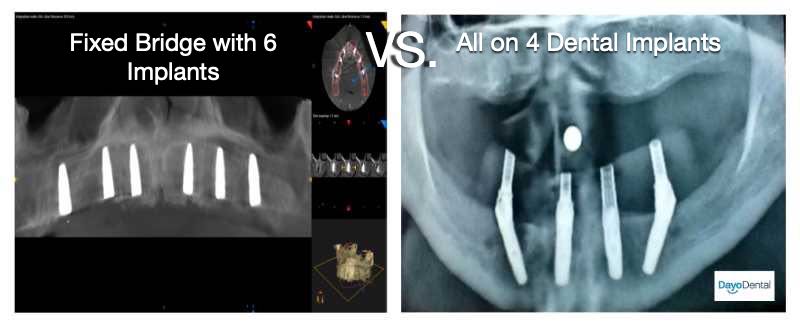
What’s the difference between a Fixed Zirconia Bridge and Fixed Hybrid Bridge?
- The prosthetic on both procedures is not user-removable. You’d need to go to a dentist to have the full dental bridge taken out and cleaned.
- The “Fixed” part refers to the bridge itself, which is anchored in place on standard dental implants
- A Zirconia Bridge uses zirconia as material for the prosthetic. A Hybrid Bridge uses a combination of acrylic, composite, and titanium frame for the prosthetic
These fixed bridge options using traditional implants offer several benefits over All on 4 supported dentures and prosthetics:
- More implants means more support across the entire arch of teeth.
- You get implants above the molars, which you don’t get in All on 4. The molars undergo the most bite force of any teeth, so extra support here is invaluable.
- If one implant fails, you still have 5-7 implants supporting your teeth. Because All on 4 is designed to work with exactly four implants, failure in one means redoing almost the entire procedure.
- With All on 4 dental implants, two of the implants need to be angled to properly fit within the jaw. These angled implants cannot carry as much force as traditional, vertically-placed implants.
So while All on 4 dental implants certainly sound like an attractive prospect to many, it’s not always the best tool for the job.
Tips for getting the right full arch implant procedure for your needs:
- Be wary of dentists who offer All on 4 dental implants as a one-size-fits-all. Age, bone type, and lifestyle goals can all play a part in determining the most suitable treatment type for you. If your dentist isn’t taking these into account, you’re not getting the best treatment possible.
- Ask your dentist if you’re suitable for 6 or more implants per arch. An experienced dentist will give you an honest answer, and be able to explain why you are or aren’t suitable for a procedure. If you’re not satisfied with their answer, ask around.
- Educate yourself on Fixed Zirconia Bridge and Fixed Hybrid Bridge restorations. Read into the pros and cons of these processes deeper so you can ask informed questions. It can also help to ask your dentist about these options first instead of All on 4 dental implants. Here’s a blog that explains your various options for full arch implants.
- Get a second opinion. Or even a third, or fourth. If you’re unsure you’re getting the best treatment suggestion, double check with other experienced dentists. While they may all have their own different individual approaches, they should agree on the type of implant process that’s right for you.
3. Assuming that everyone is suitable for All on 4 dental implants.
As we touched on briefly above, All on Four isn’t a one-size-fits-all option. In fact there are fairly limited criteria where it’s truly the best option:
- You have sufficient bone in your front jawbone.
- You don’t have good bone in your molar area.
- You’re looking to get immediate load implants.

As you can see, bone volume plays a crucial role in eligibility for All on 4 (and any dental implant, for that matter). Without sufficient, healthy bone, implants can’t fuse in place properly and provide support.
Because All on 4 is anchoring an entire upper or lower teeth replacement on just 4 implants, they need to have a very healthy bone to fuse into. Without that bone health and volume at the front of the jaw, the implants will likely fail.
Likewise, if you have insufficient bone over your molars, you can’t place traditional vertical implants there. Oftentimes, the dentist will have to do extra bone grafting or sinus lift to rebuild your molar jawbone.
If you’re desperate to get your mouth restored ASAP, then immediate load implants are what you’re after. However, just because you want immediate load implants — and even if you’re eligible for All on 4 — doesn’t mean it’s a good course of action (we’ll discuss that in more detail later in the article).
You can read more about eligibility for All on 4 Dental Implants here.
If those three aspects don’t apply to you — if you have poor bone volume at the front of your jaw, or great volume at the back, or are patient — then you’re better off with traditional, vertical implants.
Tips for determining your eligibility
- Review your 3D CT Scan X-Rays with your dentist. This will help give you a better look at the state of the bone within your jaws.
- Ask if you have enough bone volume in the front of your jaw to place the implants. As we said in the previous point, some dentists use All on 4 as a catch-all procedure. Asking this question may help with determining if that’s the right course of action, or whether you should seek an alternate dentist.
- Ask if you have enough bone volume above your molar. This is a great follow-up to the above. If you have sufficient bone at the front and back of your jaw, then traditional implants are likely the superior option for you.
4. Not verifying and researching the brand of the implants
Many people pride themselves on being frugal and buying generic brands for items to save money. This is a great practice for a lot of things like grocery items and even many medications.
But sometimes you’re not just paying for a brand name, you’re paying for the history, reliability, longevity and quality assurance that brand brings.
There are many types of dental implants on the market, and frankly they are not all made equal. Generic brand dental implants are risky for two primary reasons:
- Uncertainty of the quality of the implant itself.
- Uncertainty of the longevity of the company. Properly inserted dental implants can last many decades, if not for the rest of your life. If you need a replacement connector 7 years on, for example, will that company still be there? Or will they have gone bust? A name brand is more likely to be a stable entity that will be able to act on its warranties into the future.
Ensure you’re getting quality implants before starting work. It will be a time-consuming, expensive, and uncomfortable process getting problems resolved once they’re in.
Tips to make sure you’re getting the best implant brands:
- Ask for the brand name. A simple but effective tip! The two top brands in All on 4 dental implants are Neodent (by Straumann) and Nobel Biocare. Nobel Biocare is actually the original manufacturer and designer of All on 4, and their implants are very dependable. If you’re not familiar with the brand your dentist uses, research them before proceeding.
- Verify the warranty of the implants. Straumann come with lifetime guarantees. If what your dentist is saying doesn’t match the warranty information available from the companies, it can be a sign for concern.
- Make sure you get a certificate of the implant specifications after surgery. This should be par for the course with dental implants, but if they’re not offered — ask. This information will be vital in the future should you ever need to restore the dental implants or use the warranty in the future.
5. Assuming you will get teeth-in-a-day
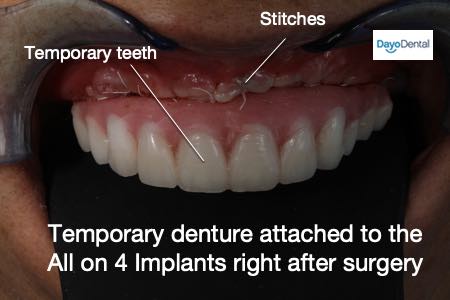
Instant gratification is king in the marketing world, so it’s no surprise to see “teeth in a day” advertisements just about everywhere. The promise is simple and attractive — your implants and prosthetic all together in one trip. No down time, no waiting, just instant results.
This is certainly a possibility with All on 4 dental implants, but here’s the thing:
The ideal candidates are few, and even for those who are candidates it’s rarely recommended.
- To be eligible for immediate load dental implants you need to have really good bone volume. Typical implant and All on 4 recipients have some level of bone loss, either as a cause or symptom of losing teeth. Immediately this rules out most people
- Just having bone volume isn’t actually enough. Not all bone is equal. Some people have “softer” bone tissue that’s not suitable for immediate loading. This won’t typically be discovered until the operation is underway, which is why dentists should never guarantee that immediate loading will be possible (if they do, be skeptical.)
Most people who get to the point of needing full mouth extractions and implants have a lot of bone loss. Those with perfect bone for All on 4 Dental Implants represent a small percentage of people getting full arch restorations.
Even if you are a suitable candidate with the perfect type of bone, there’s one last problem:
You don’t actually get “teeth in a day”.
The teeth attached on the implants on the day of surgery are temporary teeth. You still need to return to the dentist after several (3-4) months to have the permanent teeth installed. While for many it’s nice to not have to deal with removable dentures – as with Fixed Bridges – during the healing period, you’re not actually saving yourself time on the overall treatment.
Tips for teeth in a day
- Have realistic expectations. Few people are true candidates for immediate load “teeth in a day”. Those who are don’t always get the temporary prosthesis attached after the surgery. Wish for the best but plan for the worst to avoid disappointment.
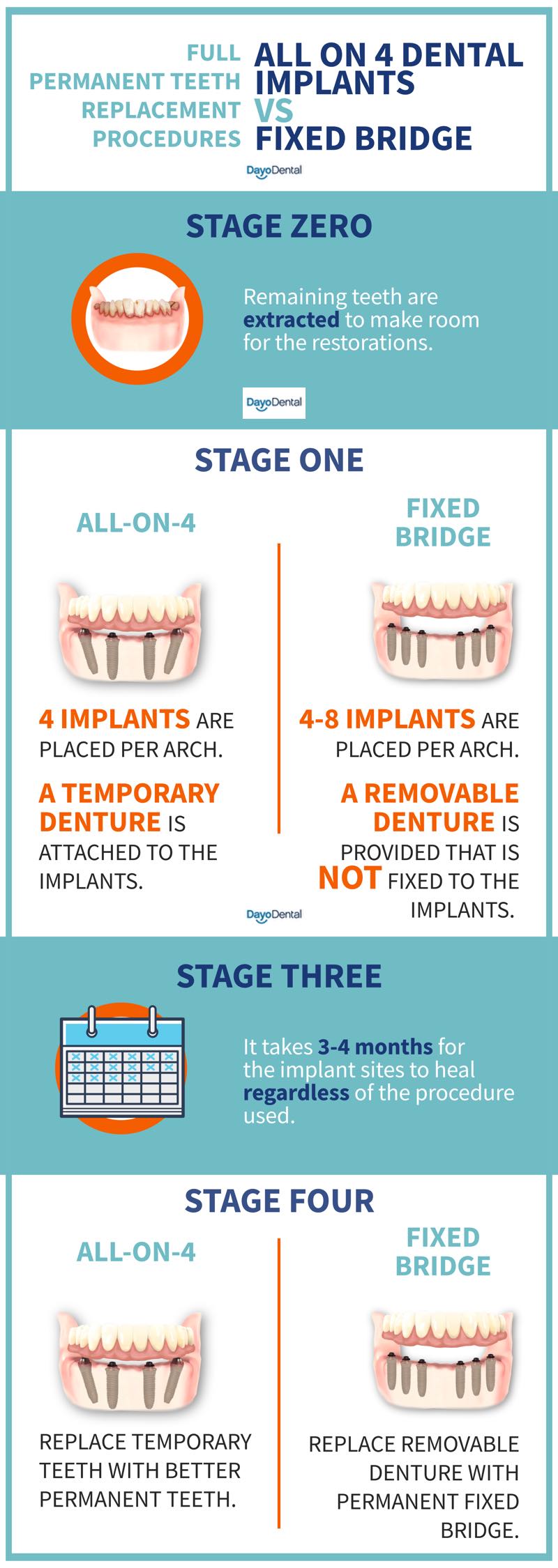
6. Assuming that it’s best to extract all your teeth and start over
Any dentist worth their salt will tell you exactly the same thing:
Nothing beats having your natural teeth in your mouth.
Dental implants are often considered the next best thing, as they replace the form and function of a tooth, but they’re still a substitute. You won’t taste food quite the same, or feel textures, or have quite the same sensation of the space within your mouth as before.
But more than that, it’s typically much cheaper, cost effective, and comfortable to keep as many healthy teeth as possible and work around them.
For example so many patients are terrified of the idea of a root canal. Decades of bad press have painted them as obscenely painful procedures. But most of the pain associated with root canal treatments is the pain from the infection, not the treatment. Post-operative root canal pain is actually very easily managed.
The treatment and recovery time is also much less costly and much faster than extracting and replacing the teeth with dental implants. You maintain all of the benefits of the original teeth with none of the downsides of replacing it with a substitute.
There are some cases where removing a healthy tooth is, ultimately, the best course of action. But it’s not always the norm.
Tips for avoiding multiple extractions and avoiding unnecessary implants:
- Get multiple opinions. A periodontist or oral surgeon might be much more likely to want to extract and replace than, say, a prosthodontist. Try to get as honest an assessment as possible and keep biases in mind.
7. Using your teeth prematurely after the first surgery
Assuming you are lucky to get teeth-in-a-day, it is exceptionally important to make sure you don’t rush into using your teeth too soon. It can be tempting — isn’t that why you got immediate load teeth? — but the truth is you need to give your implants time to heal.
One of the most important factors in dental implants — All on 4 or otherwise — is “osseointegration” (literally “bone integration”). This is the technical term for the bone growing around the implant and setting it in place.
It’s a fairly slow process that isn’t fully finished for several months after the implant surgery. The crucial period is the first 6 weeks. During this time, it is absolutely crucial to not put too much load on the dental implants.
If you do, you’ll ruin the implant-bone integration, one or more implants will fail, and you’ll need to start again.
The biggest problem is the swelling and pain of the surgery is almost completely gone after the first two weeks or so. Many people take this as a sign that the healing is over and they’re free to use their teeth to chew and bite like they would normally.
Tips for not compromising your dental implants:
- Get written instructions after surgery. Follow these notes to the letter. You should receive these after-care instructions without asking, but if you don’t get them, make sure to request them.
- Be patient. For the first six weeks, avoid biting and chewing anything hard with your temporary teeth. This will compromise your implants and cause serious all-on-4 dental implants problems. Anything mashed, cauliflower, bananas, quinoa, eggs are samples of what can you eat after all-on-4 dental implants.
8. Not shopping around for prices
You’ve followed the previous steps. You’ve found someone who’s experienced with dental implants, who has done many All on 4 procedures. You’re an ideal candidate. They’re ready to start ASAP.
The dentist tells you that All on 4 dental implants cost $28,000 USD per arch. You don’t care; this is your dream, your goal, and you sign the dotted line.
And have just spent about $10,000 more than you needed to.
It’s not uncommon for buyers to act on impulsive, emotional highs when considering high-ticket items. You have a problem and someone has the solution. The cost becomes secondary to getting your need addressed sooner rather than later.
This is what many businesses prey on: that you’ll accept the first good-sounding offer you come across rather than shop around. Dentistry and medical care is often no different.
But it’s almost always possible to get the work done cheaper without compromising on quality. You just need to be open to shopping around, often outside of your immediate neighborhood.
Did you know that the average all on 4 dental implants cost Mexico vs Canada can range between $23,000 and $33,000 … per arch?
But that in Mexico the price range is $10,000 to $15,000?
Many might question the quality of the work if it’s so substantially cheaper. The truth is, even though Mexico is the cheapest place to get all-on-4 dental, the top dentists in Mexico are often trained in the states, and even return to the states to train future dentists here.
That’s where Dayo Dental comes in. We only work with the top 5% of dentists in Mexico, those whose work and experience places them in the top dentists in the world. We can help connect you with a dentist who will guarantee their work for 5 years, giving you peace of mind.
Our packages price is $11,800 for All on 4 implants per arch. This package is all-inclusive — extraction, grafting, implant installation, temporaries, and final fixed prosthesis. You won’t find cheap all on 4 dental implants in the States, and you won’t need to worry about compromising on the quality of the work provided.
Call us at 877-987-3296 or sign up to talk to one of our professional advisors.
- Check the inclusions in the pricing. Not every dentist will give you a pricing that covers the beginning to end of the process. It’s not uncommon for dentists to leave out the second stage of the procedure, where the final, fixed teeth are actually placed. This stage can often drastically increase the price you were expecting to pay for your All on 4 procedure.
- You get what you pay for. Experience of the dentist and the brand of implant used in the treatment will greatly influence the price of your All on 4 dental implants. Beware of bargain basement deals in the US or Mexico — you might find yourself with a lower quality, generic brand implant for an inexperienced dentist.
- Remember the other tips. Experience. Branding. Provided inclusions. Whether the dentist is forcing you to consider All on 4 or whether they’ve discussed other tooth replacement options. Carefully considering and following all of these tips will help you determine whether you’re paying a reasonable price for the service you’re receiving.




 Can I Use US Financing for Dental Implants in Mexico? Everything You Need to Know
Can I Use US Financing for Dental Implants in Mexico? Everything You Need to Know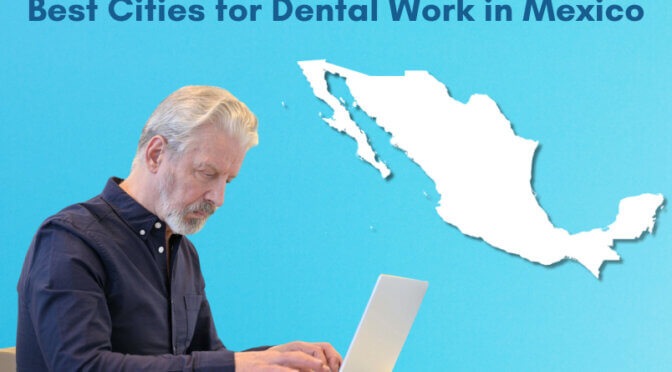 Dental Tourism Destinations: Best Cities for Dental Work in Mexico
Dental Tourism Destinations: Best Cities for Dental Work in Mexico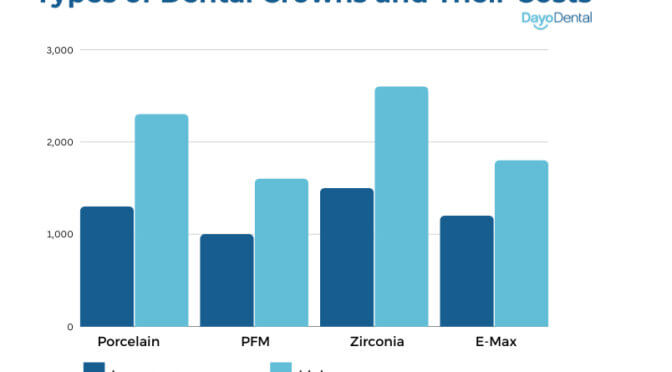 Which Crown Reigns Supreme? Comparing Different Types of Dental Crowns and Their Costs
Which Crown Reigns Supreme? Comparing Different Types of Dental Crowns and Their Costs